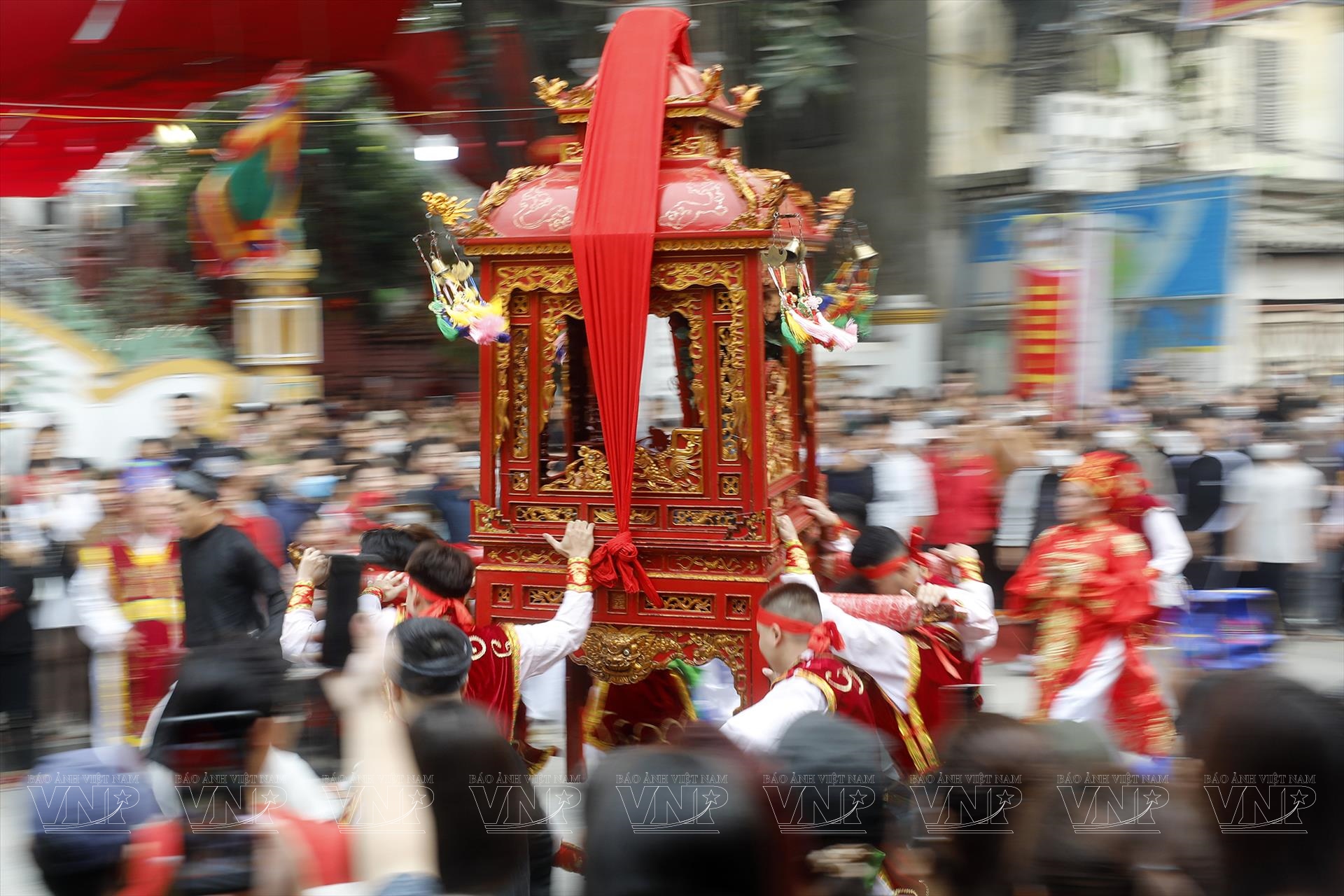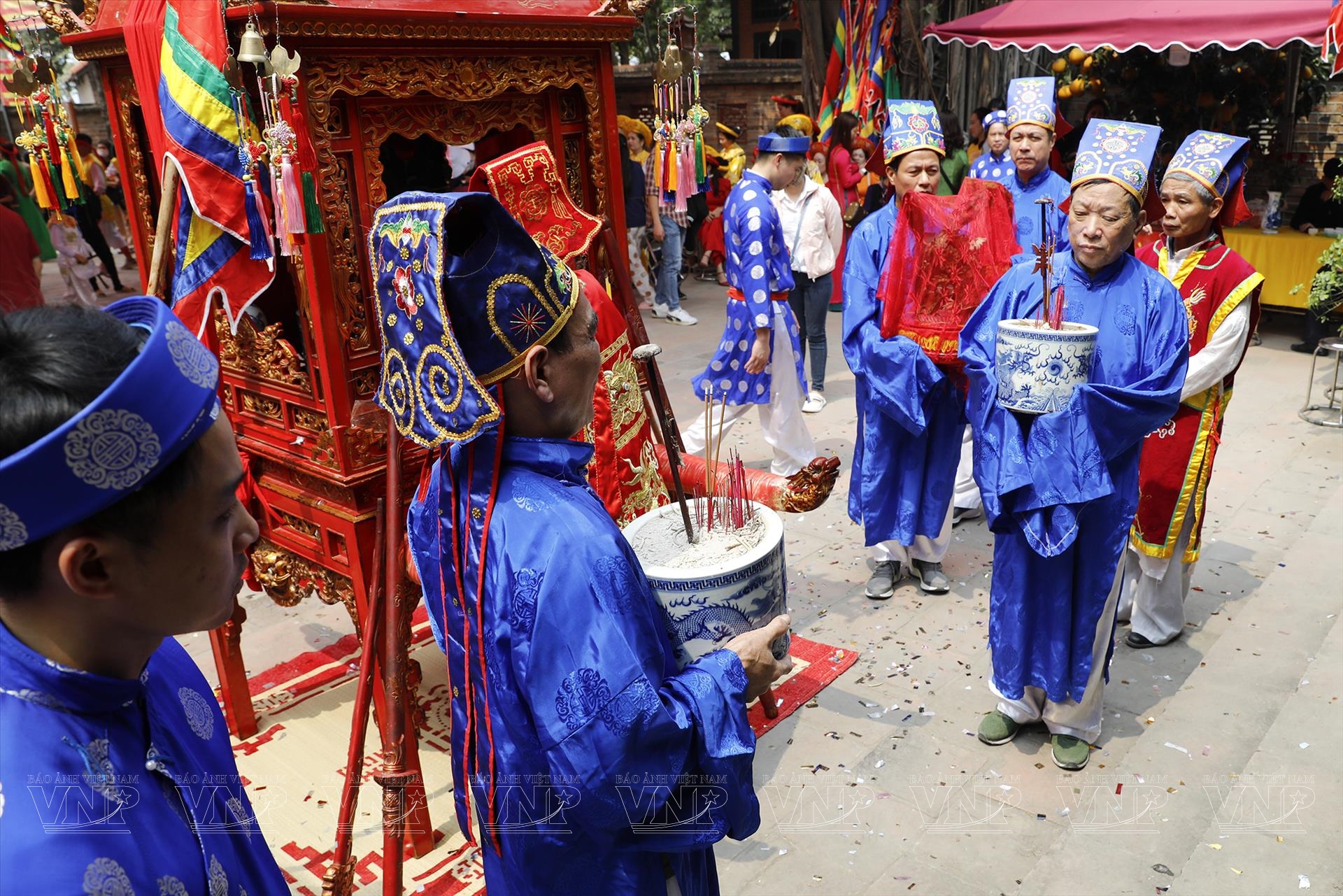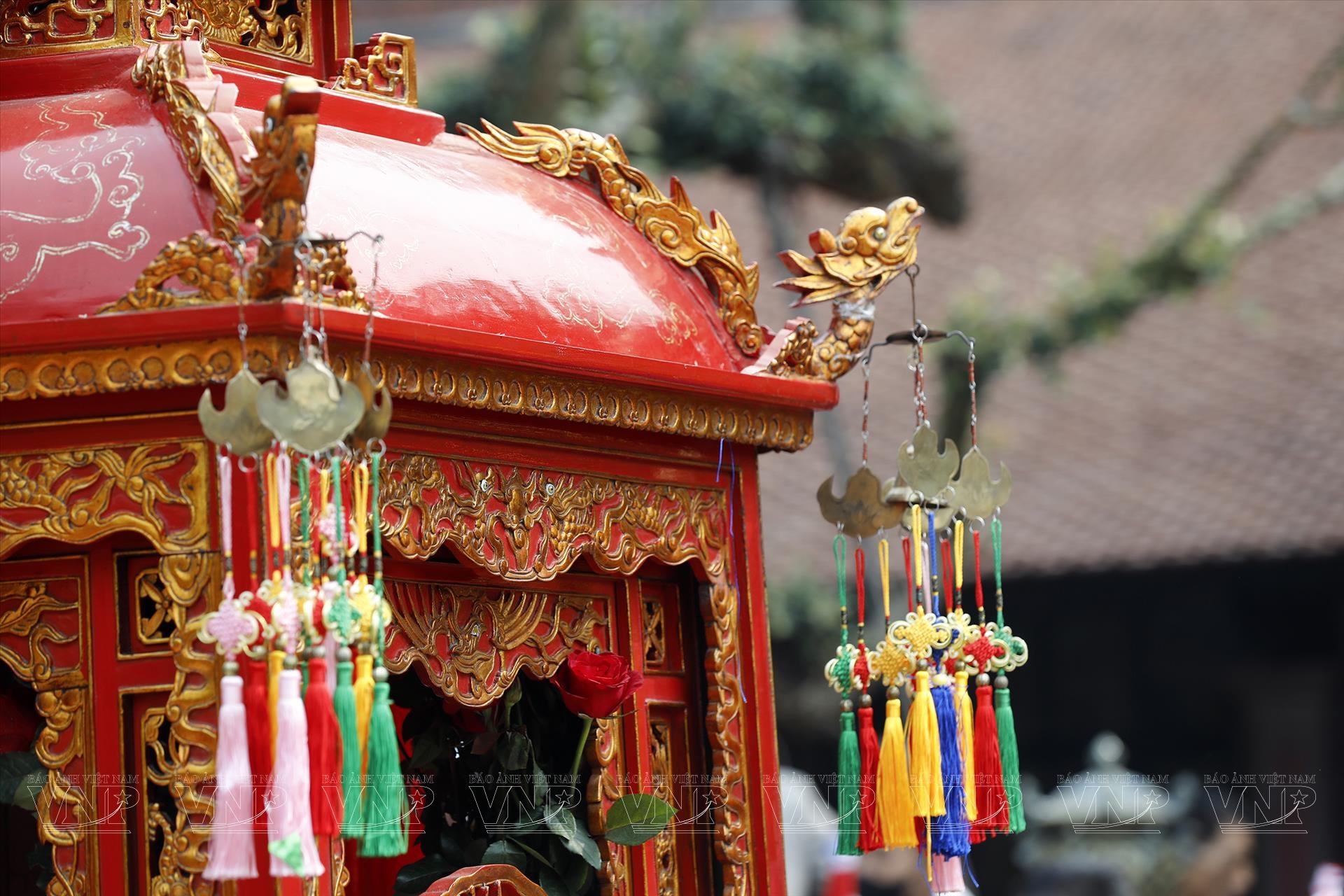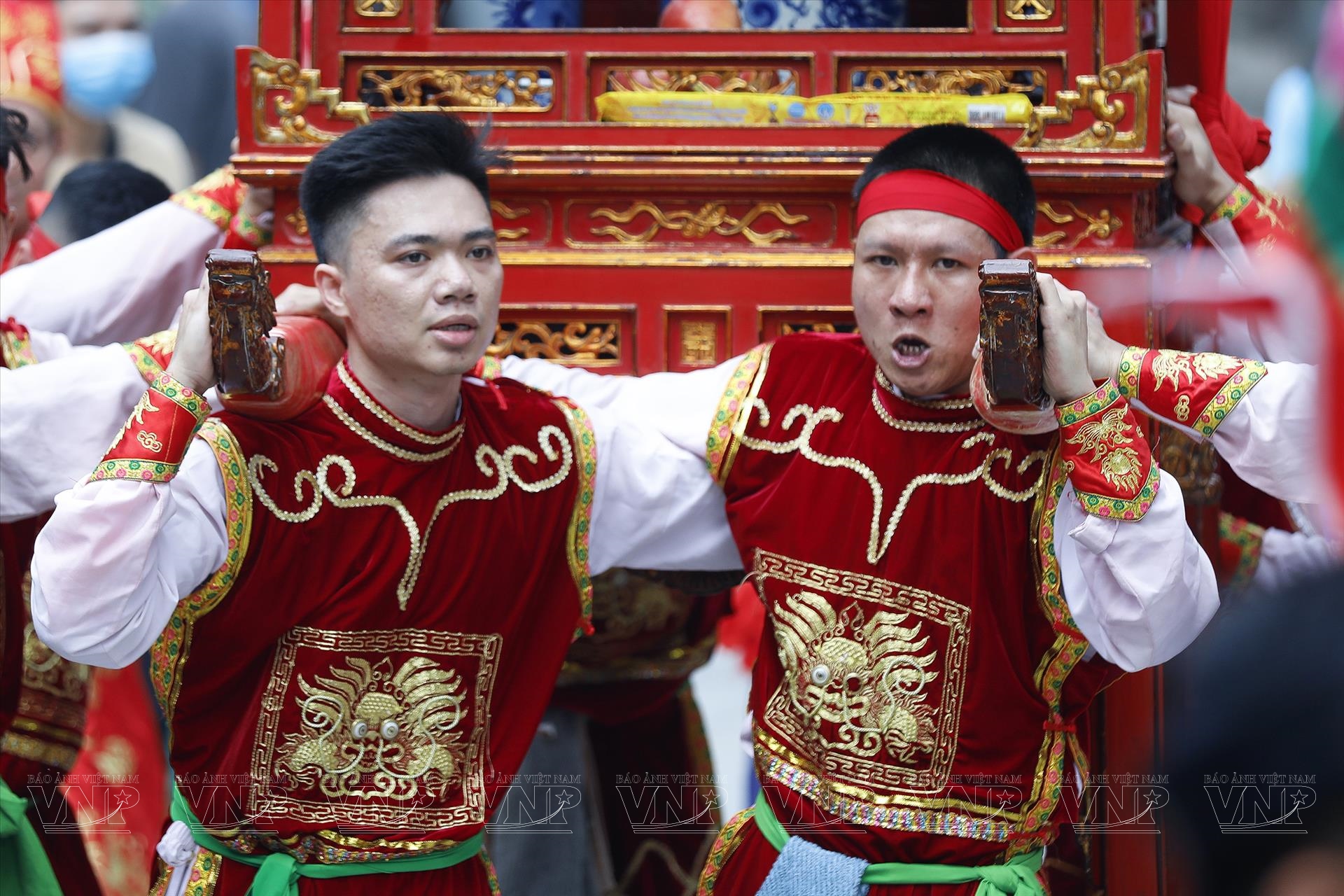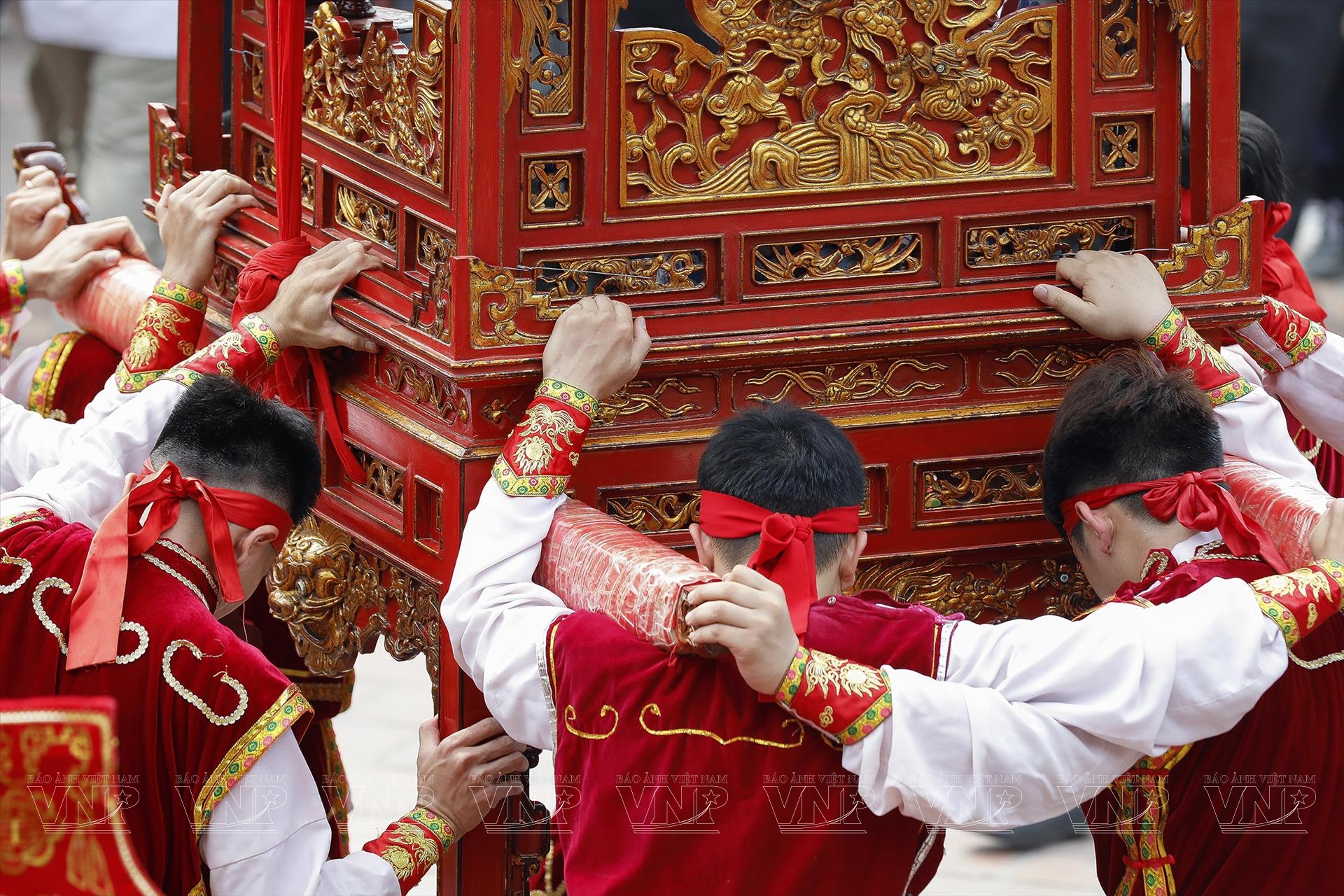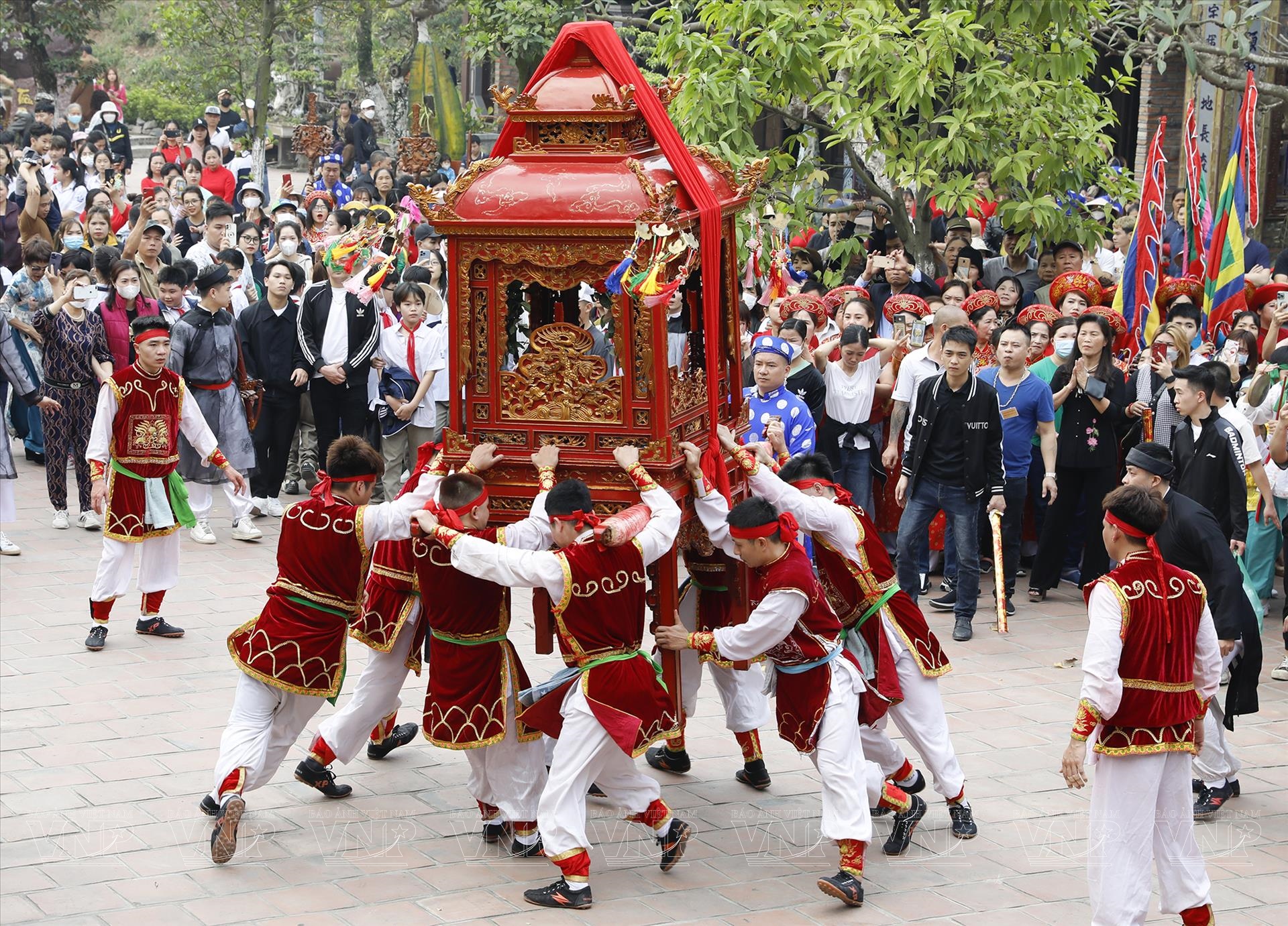The Palanquin Procession of Giang Cao Village
Every year, on the 15th and 16th in February of the lunar calendar, the Giang Cao village festival takes place in Bat Trang commune, Gia Lam district, hanoi. The festival is held to honor the tutelary deities for their significant contributions to the village. One of the highlights of the festival is a distinctive ceremony featuring a palanquin procession.
The people of the Giang Cao communal house worship four tutelary deities, including Phung Son, Phung Di, Hai Nuong, and Ty Nuong. On regular days, these deities are worshipped solemnly inside the communal house, but during the festival, their incense bowls are taken on a procession around the village.
The festival features many lively activities such as the flag procession, water procession, and incense offering ceremony. However, the most anticipated event is the procession of the deities on a rotating palanquin.
Giang Cao village used to be a purely agricultural area, and according to tradition, there would be a water procession on festival day. The procession would begin at the communal house, where people would board boats and travel to the center of the river to collect fresh and clean water. The water was then taken back to the communal house and used for worship as a ritual to show appreciation to the tutelary deities and seek blessings for good weather and a productive harvest.
On the first day of the village festival, the villagers will spread flower mats, spray fragrant water, and then place a palanquin in front of the communal house of Giang Cao village. After performing a solemn ceremony, the villagers will respectfully carry the incense bowls and four tutelary deities' worshipping items from the communal house to the palanquin. The incense bowls and worshipping items on the palanquin are securely fixed.
At the auspicious hour, eight strong young men will lift the holy palanquin onto their shoulders. From this point on, the palanquin will not touch the ground except when it stops to be placed on the flower mat in the communal house's courtyard. The holy palanquin will be carried in a very special way, with the large palanquin moving back and forth by the rhythmic steps. It will move swiftly and flexibly, sometimes rotating, sometimes moving smoothly on the road, in a graceful and agile manner.
Using this method of transportation, the holy palanquin will move from the communal house along the village road, passing by important landmarks such as pagodas, war memorials, and schools. With the sound of ceremonial music and cheers from the spectators, the young men carrying the palanquin will sway up and down continuously, creating an incredibly lively and joyful atmosphere. It's like they are flying and hovering, adding to the excitement and merriment of the event.
On the opening day of the festival, everyone will follow the parade of the holy palanquin through the village's streets until late at night before returning to the communal house's courtyard. There, the villagers will perform a ceremony and then remove the items of worship from the palanquin and return them to the communal house.
Giang Cao villagers also worship two other saints in a large temple located near the banks of the Red River. The next morning, the parade will proceed to that temple to pick up the two saints to join the procession. The parade will move in reverse from the riverbank to each alley in an atmosphere of excitement and festivity, lasting until late afternoon.
